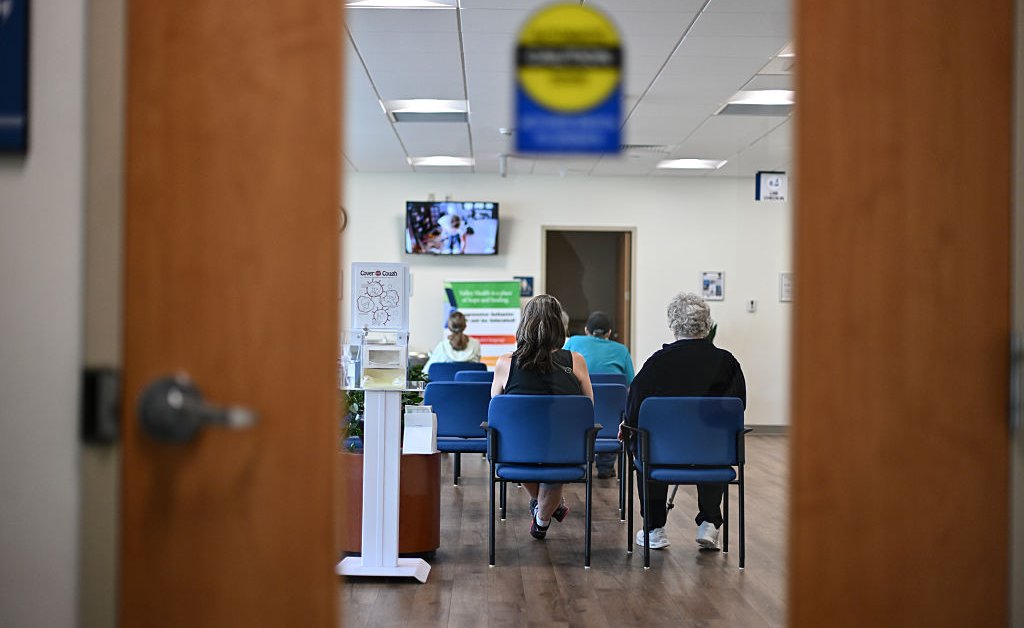Medicaid, the medical insurance program for low-income People that gives protection for greater than 70 million folks, faces its largest overhaul in a long time underneath President Donald Trump’s “One, Huge, Lovely Invoice,” a large tax and spending bundle now being thought-about by the Senate that may slash its funding.
Each the Home and Senate variations of the invoice, which continues to be present process adjustments because the higher chamber votes on amendments, would scale back funding for this system by a whole bunch of billions of {dollars}, in accordance with the nonpartisan Congressional Price range Workplace (CBO). Almost 12 million adults might lose medical insurance due to the proposed cuts within the Senate’s revised invoice over the following decade, the CBO estimated in a Saturday report. A lot of the cuts are anticipated to return by way of imposing new administrative necessities on enrollees, or threat shedding their protection.
The White Home has rejected the CBO’s findings, insisting that the cuts to this system will solely cut back fraud and waste. “President Trump pledged to guard and protect Medicaid, and that’s precisely what The One, Huge, Lovely accomplishes by kicking unlawful immigrants off this system, implementing commonsense work necessities, and imposing fundamental eligibility verification to fight fraud,” White Home spokesman Kush Desai wrote to TIME.
The Home narrowly handed the invoice in Might, and lawmakers at the moment are working in an effort to cross the proposed laws by a July 4 deadline imposed by Trump. The proposed Medicaid cuts have been contentious amongst Republicans, a few of whom have been cautious of their potential influence. Senator Thom Tillis, a Republican of North Carolina, has vowed to vote towards the invoice until his issues over the cuts are addressed.
Right here’s what to find out about Medicaid.
What’s Medicaid?
Medicaid was created following the passage of the 1965 Social Safety Amendments underneath President Lyndon B. Johnson, in accordance with the Nationwide Archives. The regulation established each Medicare, which usually gives medical insurance protection for People aged 65 and older, and Medicaid, which serves low-income folks.
Medicaid is financed collectively by state and federal governments and accounts for a couple of sixth of well being care spending within the U.S. It’s a vastly widespread program amongst People: Greater than 80% have a optimistic view of Medicaid, in accordance with a survey performed earlier this month by nonpartisan analysis group KFF.
The Reasonably priced Care Act enabled states to develop Medicaid eligibility to incorporate non-elderly adults whose revenue was as much as 138 % of the federal poverty stage—a nationwide median of $44,367 for a household of 4 this yr. Forty states and Washington, D.C., have up to now adopted the enlargement, 90% of which is funded by the federal authorities.
In the course of the COVID-19 pandemic, Congress allotted further Medicaid funds so recipients might keep “steady protection,” requiring states to maintain most individuals enrolled in this system no matter revenue in alternate for the improved federal funding. Steady enrollment concluded on the finish of March 2023, and an “unwinding” course of started.
Some states have various names for Medicaid, resembling DenaliCare in Alaska, KanCare in Kansas, and SoonerCare in Oklahoma.
How many individuals are enrolled in Medicaid?
Medicaid enrollment has stood at round 20% of the full U.S. inhabitants for the final a number of years, the Pew Analysis Middle studies.
Some 71.3 million low-income folks within the U.S. had been enrolled in this system in March 2025, greater than half of whom had been adults, in accordance with a report from the Facilities for Medicare & Medicaid Companies (CMS). The determine was notably increased lately: Roughly 100 million folks had been enrolled in Medicaid in some unspecified time in the future in 2023, in accordance with a December 2024 report by The Medicaid and CHIP Cost and Entry Fee. The numbers have declined following the top of steady enrollment, nevertheless, as states have resumed disenrolling folks from this system.
Learn extra: Medicaid Expansions Saved Tens of Hundreds of Lives, Examine Finds
The proportion of individuals enrolled in this system varies considerably between states. Greater than 30% of residents in Louisiana and New Mexico are coated by Medicaid, in accordance with KFF, in comparison with simply 12% in Wyoming and North Dakota.
Who’s eligible for Medicaid?
The federal authorities units broad eligibility necessities for Medicaid. It requires states to cowl some teams after they fall under sure revenue ranges, together with pregnant girls, households with kids, disabled folks, and most youngsters in foster care.
However because the program is state-administered, Medicaid {qualifications} differ on a state-by-state foundation. As an illustration, some immigrants could also be eligible for protection in states resembling New Jersey or New York. One of many provisions within the Senate model of Trump’s tax and spending invoice was supposed to chop federal funding to states that use Medicaid to offer well being care to undocumented immigrants. Nonetheless, that a part of the invoice is in limbo after the Senate parliamentarian discovered that the measure didn’t comply with Senate guidelines.
Are Medicaid recipients required to work?
Present laws in most states don’t require Medicaid recipients to work. In Georgia, nevertheless, candidates are required to show that they accomplished at the least 80 hours of labor or volunteer companies to obtain protection. Due to this verification system, a ProPublica report discovered that Georgia enrolled solely a fraction of Medicaid-eligible folks: some 7,500 of the estimated 250,000 eligible residents.
Makes an attempt to implement work necessities in Arkansas had been struck down by a federal courtroom in 2019. A federal decide blocked comparable necessities in Kentucky from taking impact the earlier yr, and Governor Andy Beshear halted efforts to impose them in 2019 shortly after taking workplace.
Idaho, Kentucky, and Indiana have adopted laws to impose work necessities this yr, in accordance with KFF. Different states are weighing imposing comparable measures. And potential work necessities are being thought-about on a federal stage in Trump’s “One, Huge, Lovely Invoice.” The bundle would require Medicaid recipients from ages 19 to 64 to confirm that they work at the least 80 hours a month, or are coaching for a brand new job, finding out, or volunteering. Folks’s work standing can be checked twice a yr.
Most working-age adults on Medicaid are employed, or have a incapacity or caregiving duties, in accordance with KFF.



